We are all pilgrims. Recent events have taught us that we are all on a journey, at times together, but the pilgrimage is our own.
In his book The Art of Pilgrimage: The Seeker’s Guide to Making Travel Sacred (Conari Press), author and pilgrim Phil Cousineau reminds us that we can make all of our journeys more intentional: With the roads to the exalted places we all want to visit more crowded than ever, we look more and more, but see less and less. But we don’t need more gimmicks and gadgets; all we need do is reimagine the way we travel. If we truly want to know the secret of soulful travel, we need to believe that there is something sacred waiting to be discovered in virtually every journey.
If you are grieving or healing or simply feel like something spiritual is missing, you can find the sacred in every step if you are looking, whether you are on a walk in your backyard or on a hike up a mountain. We are longing to find what is already inside of us, and once that has been discovered, every place we visit will be sacred too. We hope you can visit some of the sacred sites in this story, or discover your own, when the time is right.
1. Marvel at the majesty of God’s creation in the Grand Canyon
Not all pilgrimages need to end kneeling in front of a shrine—sometimes the sheer glory of God’s creation can bring us to our knees. The Grand Canyon is one of those natural wonders, carved by a river into an honored treasure, that draws millions of visitors every year.
Solo trips have their place here, but some adventures are better shared. Rafting the Colorado River through the Grand Canyon is an experience like no other. It provides an opportunity to encounter the grace of God within God’s masterpiece. The challenging river trip gives you a chance to not only look inward but also to reach outward to those around you. Be assured the experience is entirely different from that on the rim.
Newlywed and avid outdoorsman Nick made the river trip last summer with several generations of his soon-to-be in-laws in celebration of a 50th wedding anniversary in the family. He explained the importance and excitement of learning to trust yourself, your loved ones, and your creator in an unmatched setting. “Disconnecting and getting away from all of the unrealities of the world in such a beautiful and dangerous place made it possible to appreciate how important community, relationships, and familial love really are to me,” says Nick.
If you’d rather stay on the rim, there is much grandeur to see from the top. Say a sunset prayer at Hopi Point on the South Rim Trail. Take part in a Mass among the beauty (complete with the smell of fresh pine wafting in through the open doors) at El Cristo Rey Catholic Church in Grand Canyon Village within Grand Canyon National Park. This is perhaps the smallest parish in the United States, with fewer than 30 registered families. Don’t be fooled though—expect crowds in the summer months especially.
2. Contemplate Kentucky with Thomas Merton
On the unassuming corner of Fourth and Walnut in downtown Louisville, in the year 1958, Trappist monk and Catholic priest Thomas Merton had an epiphany. Merton said, “I was suddenly overwhelmed with the realization that I loved all [these] people, that they were mine and I theirs.” A modest sign marks the corner, a great starting point for a Kentucky sojourn rich in enlightenment. Breathe in the moment here and feel the love for all of your earthly brothers and sisters as you experience Merton’s epiphany for yourself.
Immerse yourself deeper in the works of Merton with a trip to Bellarmine, a Catholic university situated on the edge of downtown Louisville. In the center of campus and up a flight of stairs in the W. L. Lyons Brown Library, you will find the Thomas Merton Center—home to the largest collection of his writings, drawings, photographs, audiotapes, and memorabilia, available to view, listen, and contemplate. The center also includes a room dedicated to his parents displaying watercolor paintings by his father, Owen.
The Abbey of Gethsemani, nestled in the fields and forests of rural Kentucky south of Louisville, offers the type of inward prayerful experience Merton advised. If you are truly willing to slow down, you can experience the kind of contemplation he valued in the place where he retreated in 1941. He became a Trappist monk here, then a priest known as Father Louis. The abbey has welcomed visitors since its inception in 1848. Attend a service, tour the grounds, and explore the many trails within almost 1,200 natural acres that are open to the public. Learn about monastic life in the welcome center and snack on Kentucky bourbon fudge made by the monks in the Trappist tradition of work and prayer. Visitors can stop by for the day or make reservations for a longer retreat.
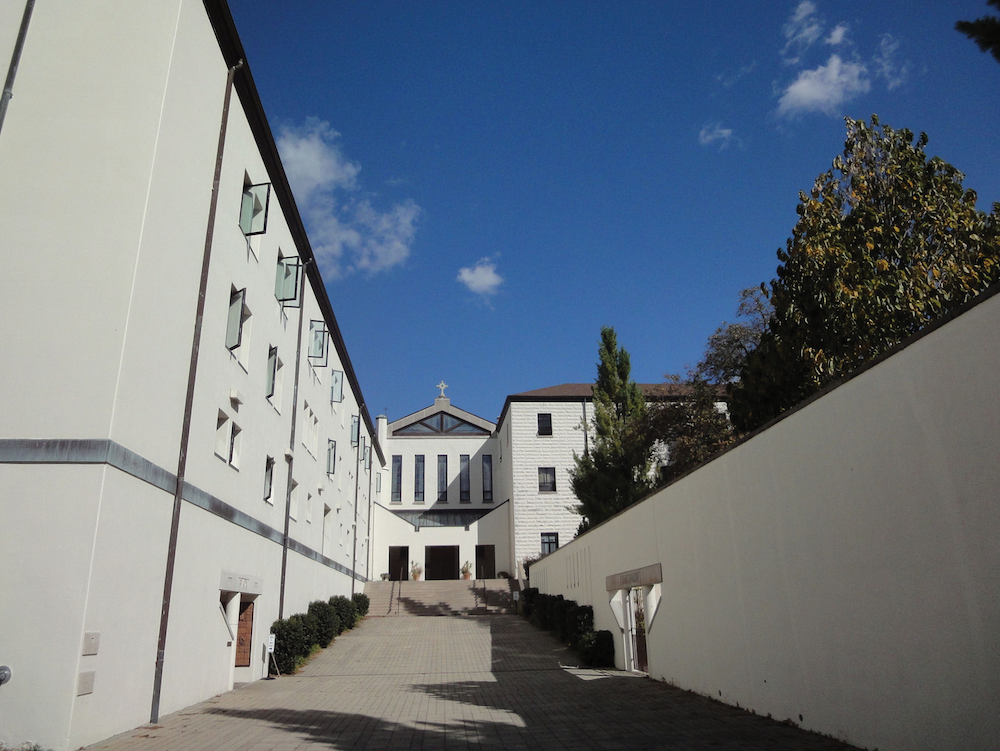
Abbey of Gethsemani (Flickr)
3. Experience the mysteries of our faith in Santa Fe, New Mexico
The high deserts of the Southwest have long been a spiritual destination for seekers of all faiths. There are plenty of pilgrimage sites to quench your thirst on a spiritual journey near Santa Fe.
Join curious pilgrims from all over the globe for a charming encounter at the Loretto Chapel in the heart of historical Santa Fe and revel in the miraculous spiral staircase built in the late 1870s. Not one but three mysteries enchant this antique gem: the identity of the builder (believed to be St. Joseph), the source of the wood used (native to Alaska, oddly), and the physics of the design (the staircase has two 360-degree turns but no support and does not use nails but wooden pegs). Legend says the carpenter disappeared before he could be paid for his work, adding another layer to the mystery.
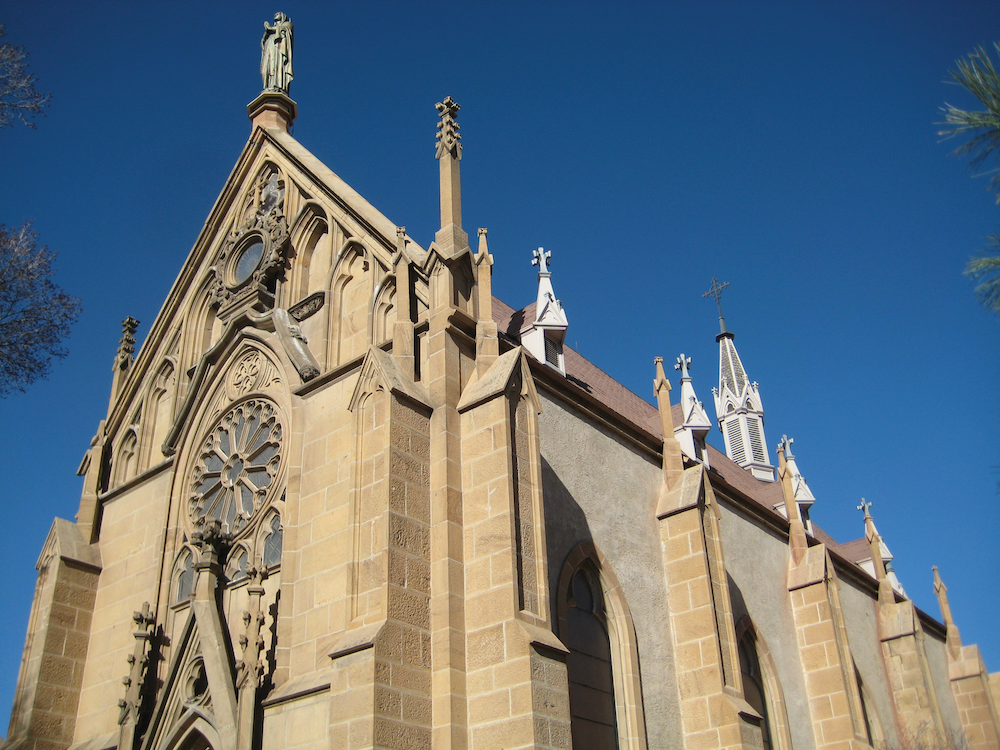
Loretto Chapel (Flickr)
A small room full of devotions, discarded crutches, and testimonials outside of the Santuario de Chimayo shrine shows the healing power of this place. Just north of Santa Fe, this “Lourdes of the West” is one of the most popular pilgrimage sites in the country. More than 200 years ago, a group of men saw a strange light on the hillside and discovered a crucifix buried there. They unearthed the crucifix only to find it buried back on the hillside the next day. After this happened twice more, a small shrine was built at the site. People began to visit the crucifix, and soon the small hole where it had been buried was discovered to contain miraculous, healing dirt. Pilgrims in search of a miracle have been coming ever since to fill their pockets with the holy dirt, ask for healing, and pray in thanksgiving. Holy Week draws the biggest crowds, many making the traditional 50-mile journey from Taos Pueblo on foot—some even crawl, carry wooden crosses, or stick cactus needles in their skin for the journey.
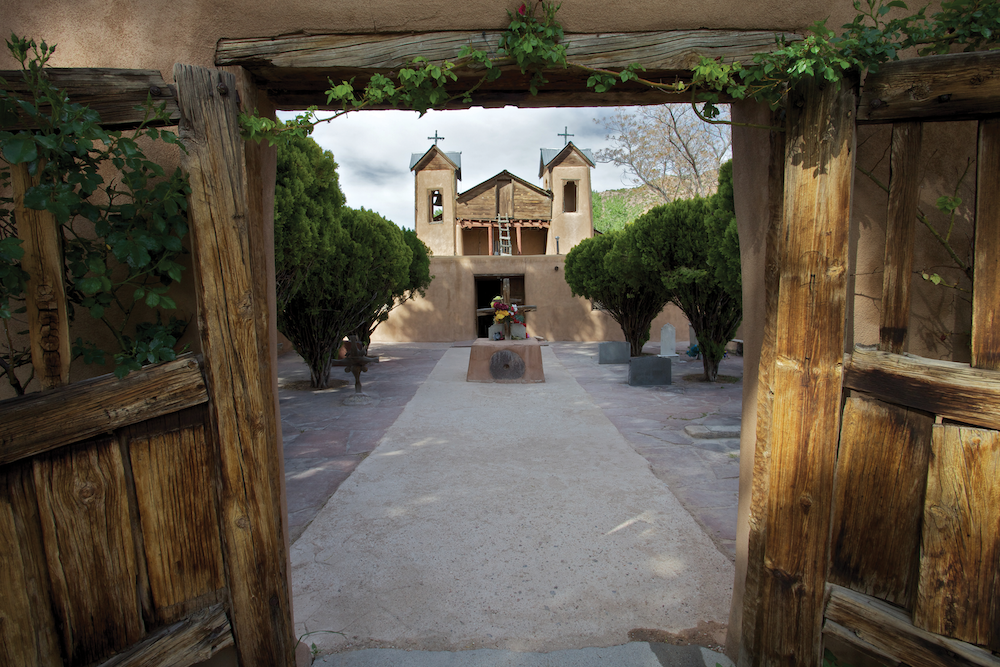
Santuario de Chimayo (Flickr)
4. Celebrate individuality and diversity in New York City
Because of its vibrant diversity, New York City is often called a melting pot. There is no better place to celebrate individuality than in this eclectic city. The sheer volume of things to do and places to explore may overwhelm you, but don’t let the daunting task of planning a pilgrimage here leave you unsettled. Remember the intention of your pilgrimage and set your goals with that in mind.
Psalm 34:14 reminds us, “Depart from evil, and do good; seek peace, and pursue it.” If you are a pacifist and want a worldly experience, plan a visit to the United Nations Visitor Centre in Manhattan as part of your pilgrimage. A guided tour will give you a better understanding of the history and purpose behind this diplomatic venture.
Aside from the many landmarks worth reveling in, the city hosts parades every month of the year, celebrating the dynamic cultures represented in this mecca, such as the Chinese New Year Parade and the St. Patrick’s Day Parade. June boasts the National Puerto Rican Day Parade, described as America’s largest demonstration of ethnic pride, along with many Pride parades and festivals honoring the LGBTQ community.
5. Encounter God’s wonder through silence in the seclusion of Big Sur, California
Above the twists and turns of Highway 1, in the tight-knit, resourceful community of Big Sur in California, the New Camaldoli Hermitage overlooks the ocean among the golden hills. Guests can pull away from life’s stimulation and seek out their inner self and their inner God. Visit the hermitage for self-led silent retreats among nature or one of the scheduled and more structured “preached” retreats throughout the year. The monks offer a special focus on solitude that modern life makes difficult but that is so important on a journey of faith discovery.
On the other side of the Santa Lucia Mountains, inland from Big Sur, Tassajara is the oldest Soto Zen Buddhist training monastery in the United States. Visitors of all faiths are invited to retreat in this ultra-remote Ventana Wilderness during the summer months to hike the trails, play in the river, and soak in the ancient hot springs, long used by native tribes to renew spiritual energy. Tassajara is dedicated to enriching lives through Zen meditation and other complementary practices.
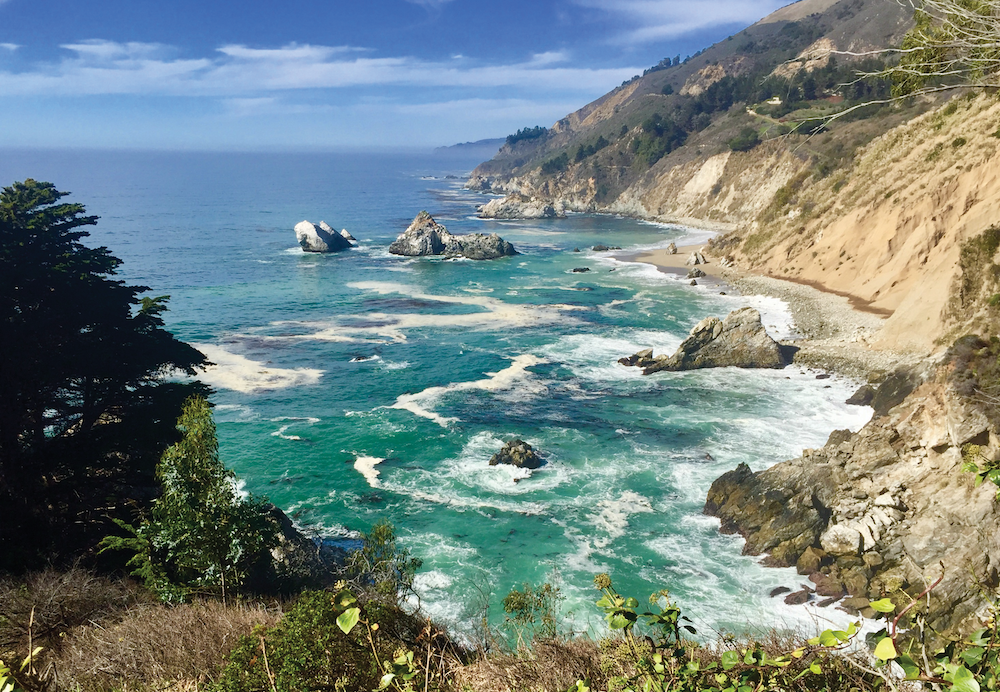
Big Sur, California (Flickr)
6. Begin a path to racial reconciliation in New Orleans
Racial reconciliation can be a charged phrase. Although it has layered meanings, merely acknowledging the past and championing diversity cannot satisfy it. One must live it, authentically and imperfectly, through compassion, relationships, and activism.
The Tremé neighborhood in New Orleans is the oldest black community in the country and a good starting point for those seeking to understand and immerse themselves in African American history and culture. This small section of town is the birthplace of jazz and has a thriving music scene, along with several cultural museums and plenty of good creole cooking.
St. Augustine Catholic Church stands proudly in the heart of the Tremé community. Founded in 1841 by free people of color (who purchased the outer rows of pews in the sanctuary exclusively for the enslaved), it is the oldest African American Catholic parish in the nation. Parish secretary Linda Harris says that the jazz gospel choir and high-spirited Masses led by Oblate of Mary Immaculate Father Emmanuel Mulenga attract many from all walks and faiths. “The community here welcomes all people—we don’t care what color or race or sexual orientation you are. We welcome people and embrace everyone as we believe Jesus would,” says Harris. Beyond attending Mass, Harris invites guests to honor the past and all of those who were enslaved by visiting the Tomb of the Unknown Slave on the St. Augustine grounds.
7. Explore the Linville Gorge for a physical and prayerful adventure
Spirituality and physicality are not mutually exclusive ideals. In fact, the opposite is true. By marrying these practices, one can experience deeper benefits of both.
The old growth forests and grandeur of the Linville Gorge provide an unmatched setting to reconnect with your body and stretch your spiritual muscles at the same time. The entirety of the gorge takes up residence in the Pisgah National Forest of North Carolina, among the Blue Ridge Mountains. Known as the “Grand Canyon of the Southeast,” the gorge was once seasonally inhabited by the Cherokee Indians, who called it Ees-ee-oh, or “River of Cliffs.” Because of its rugged nature, it escaped commercial logging and other destructive measures, thus becoming a mecca for naturalists and thrill seekers alike.
Clear your mind and open your heart on one of the premier climbing routes within the gorge, such as Paradise Alley or Built to Tilt. Meditate on St. Benedict’s words—“Always we begin again”—or any mantra you choose while traversing the many miles of trails in the gorge. If you need to ease into it, try hiking the short Linville Falls trails while offering one of the five basic prayers (adoration, petition, intercession, praise, and thanksgiving) at each overlook.
8. Find faith and fun as a family on a Rocky Mountain road trip
A car full of kids might not sound like a peaceful pilgrimage to some, but a family road trip is a great way to model the importance of setting aside time to nurture and honor your family unit and your faith practice. You can do a road trip just about anywhere, but if you want a high-altitude yet humble experience, consider the Rocky Mountains for your next family pilgrimage.
The Peak to Peak Highway in Colorado offers 55 miles of fun that you can do in a day or stretch over a week. Make memories together finding wildlife in Rocky Mountain National Park, discovering the scenic town of Estes Park, or riding the Carousel of Happiness in Nederland. This antique carousel welcomes all and seeks to impart respect and inclusivity on all its visitors. Be sure to check out the Story Catcher recording booth upstairs to practice the ancient, and sometimes lost, art of storytelling as a family, so that years from now you can always revisit your wild mountain adventure.
Mother Cabrini loved the Rocky Mountains, and the shrine she helped build on a mountaintop near Golden, Colorado, at the site that was once a summer camp for young orphans, encourages visitors to honor God and the work God does in our lives. Mother Cabrini cared especially for children, making this shrine a great one to visit as a family. Climb the 373 steps, praying the way of the cross, to the feet of an over 30-foot statue of the Sacred Heart of Jesus. See the original heart of stones Mother Cabrini made in the sand in 1912 as an offering to God. Stand at the grotto for a quiet meditation and drink from the healing spring, miraculously discovered by Mother Cabrini in 1912.
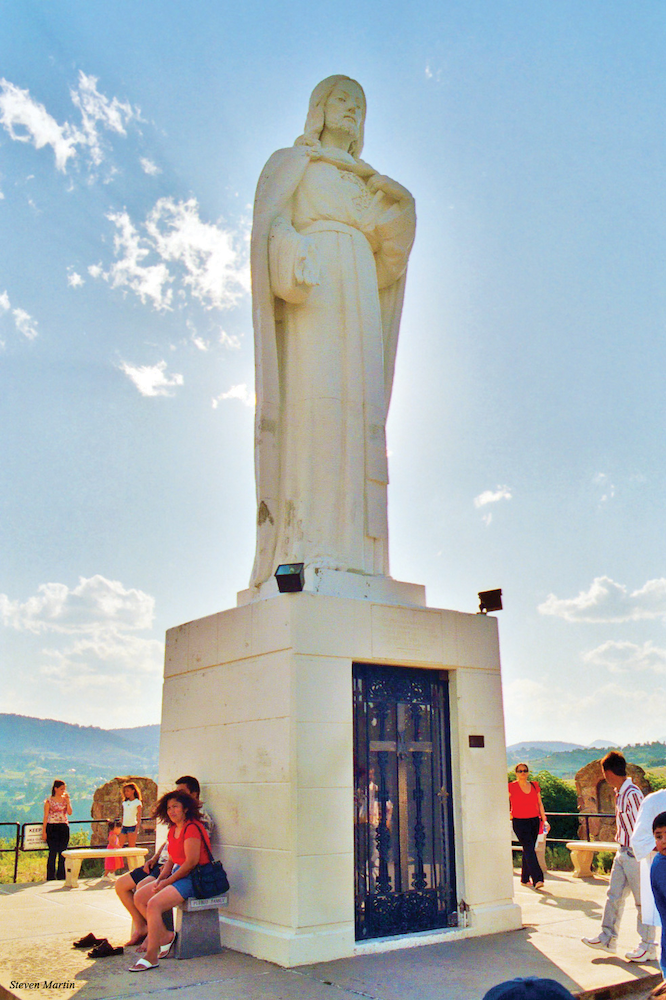
Mother Cabrini Shrine (Flickr)
9. See God at work in the universe during the Perseid meteor shower
Looking outward into the universe can open our hearts to an inward journey with our Creator, help us understand the unique mystery of our faith, and draw us into the belief that God made order out of chaos.
A meteor shower is a terrific showing of God’s gifts to us. The Perseid meteor shower, which peaks every August as we pass through debris from the Comet Swift-Tuttle, is one of the best sky events summer can offer. The best time to view this year is the night of August 11–12, and all you have to do is step outside and look up. A few simple steps (and prayers for clear skies) can make this one of the most sacred nights of your summer.
If you can’t make it somewhere known for its dark sky like Bryce Canyon National Park in Utah or Cherry Springs State Park in Pennsylvania for the event, just drive a bit out of town, away from the city lights. Take a comfy lawn chair and enough coffee to stay up all night for the best views.
The Indiana Dunes State Park in northern Indiana along Lake Michigan offers a stargazing event every year during the Perseids. From dusk until midnight, you can hear constellation talks by park naturalists and view deep space with provided telescopes.
The International Dark Sky Association is working to protect our night skies from light pollution. Visit darksky.org for more information on how you can reduce light pollution and for a list of specially designated dark sky places that offer superb conditions for night sky viewing that will make your Perseid encounter all the more enlightening.
10. Experience the healing power of the beach (and some history) in St. Augustine, Florida
St. Augustine, which claims to be our “nation’s oldest city” (it’s actually the oldest continually inhabited city in the nation founded by Europeans), dates back to 1565. Upon their arrival, Spaniards celebrated the first Mass in America, a Mass of thanksgiving, and shared a meal with native locals, which many historians now believe was the actual first Thanksgiving, more than 50 years before the more popular meal at Plimoth Plantation in Massachusetts.
The white sand beaches of St. Augustine offer a baptism of sorts for pilgrims traveling here, a place to refresh your spirit and recharge your soul. A trip to the beach has healing powers—not just for physical aches but also for ailments of the mind and soul. Ocean water has a high mineral content and many properties similar to our own blood. It is antiseptic, can strengthen your immune system, and can reduce anxiety and depression. Fresh, salty air provides negative ions to balance serotonin and accelerate oxygen absorption. A walk on the sandy beach can neutralize harmful free radicals and boost your mood. Miles of beach jut into the ocean here, offering an inviting spot to watch wildlife, walk, bicycle, fish, swim, and even surf.
The “Sacred Acre” at Our Lady of La Leche Chapel is one of several Catholic sites in St. Augustine. It provides a special setting to offer prayers and intentions on the lush and floral grounds, with a soaring 208-foot cross completing the view. Our Lady of La Leche, also known as Our Lady of the Milk and Happy Delivery, has become an effective intercessor for those seeking fertility, safe delivery, and healthy children.
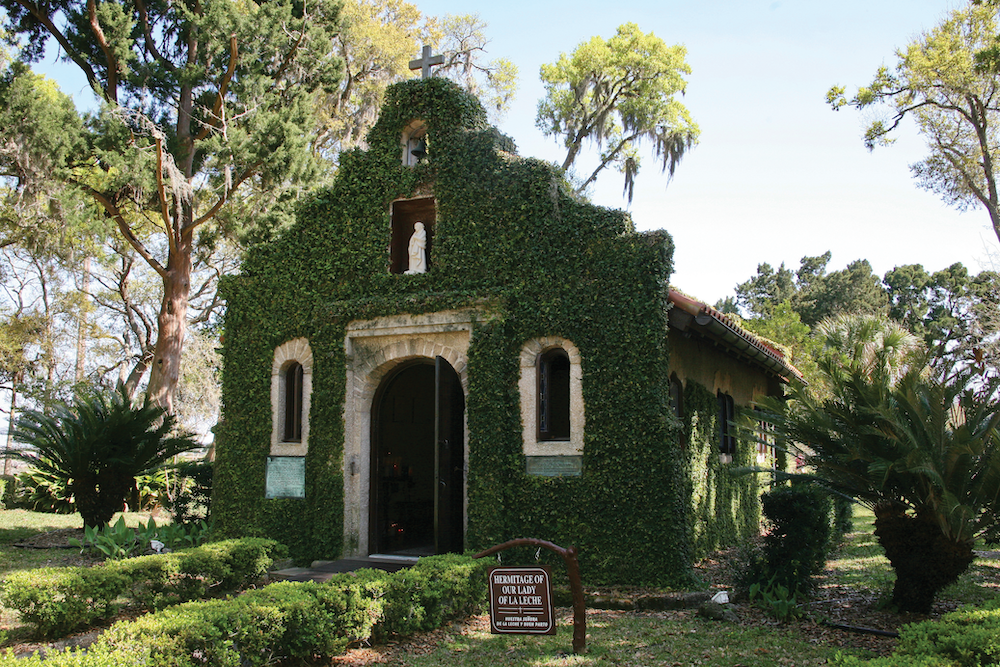
Our Lady of La Leche Chapel (Flickr)
This article also appears in the June 2020 issue of U.S. Catholic (Vol. 85, No. 5, pages 10-16). Click here to subscribe to the magazine.
Image: Linville Gorge via Flickr


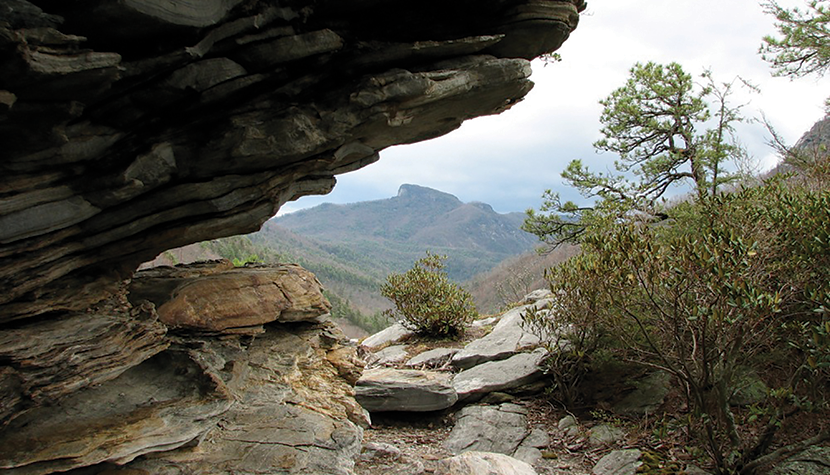




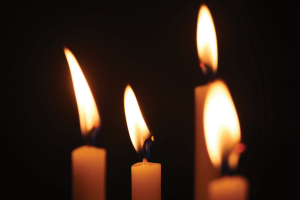







Add comment